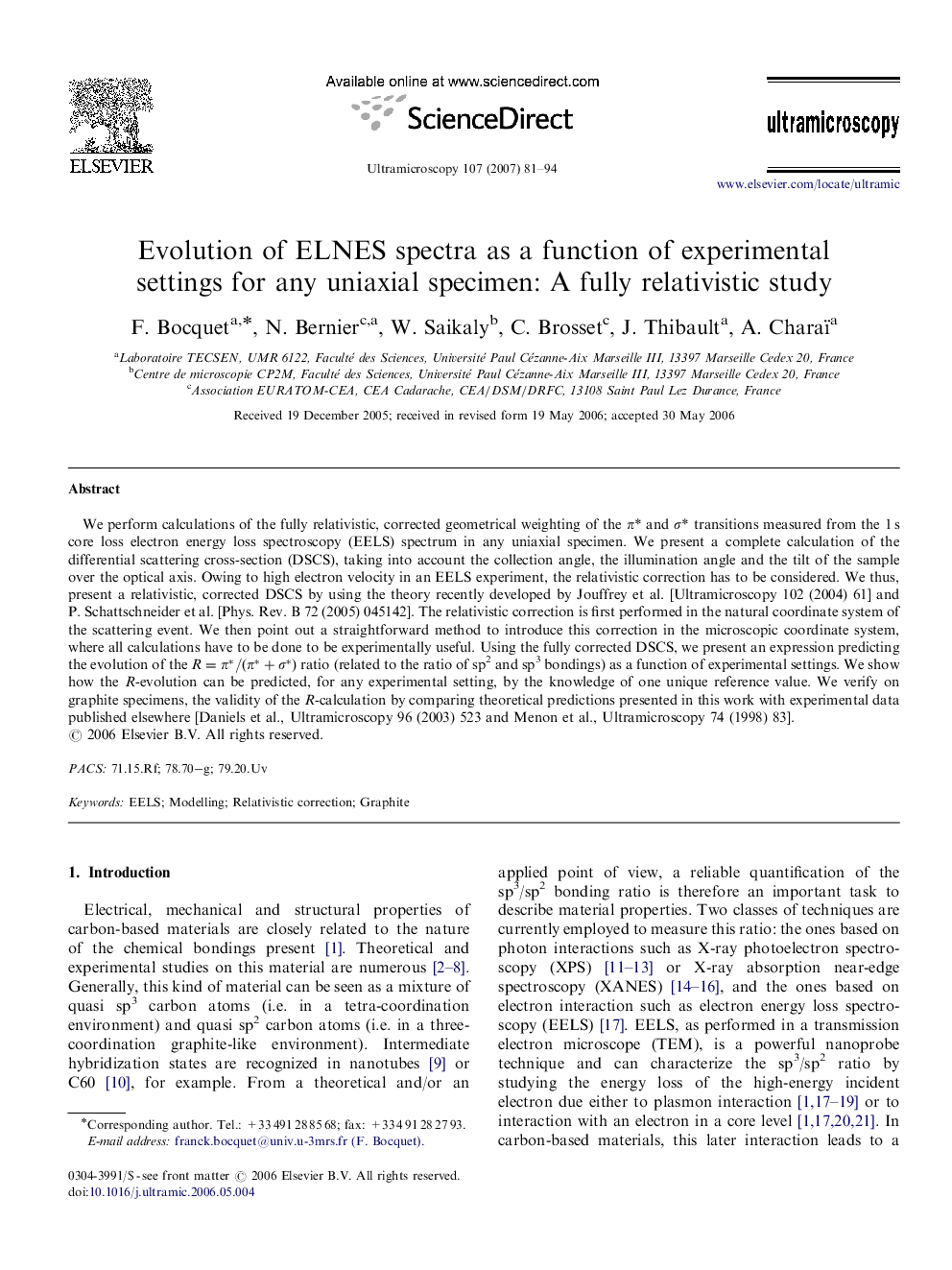| Article ID | Journal | Published Year | Pages | File Type |
|---|---|---|---|---|
| 1678687 | Ultramicroscopy | 2007 | 14 Pages |
Abstract
We perform calculations of the fully relativistic, corrected geometrical weighting of the Ï* and Ï* transitions measured from the 1Â s core loss electron energy loss spectroscopy (EELS) spectrum in any uniaxial specimen. We present a complete calculation of the differential scattering cross-section (DSCS), taking into account the collection angle, the illumination angle and the tilt of the sample over the optical axis. Owing to high electron velocity in an EELS experiment, the relativistic correction has to be considered. We thus, present a relativistic, corrected DSCS by using the theory recently developed by Jouffrey et al. [Ultramicroscopy 102 (2004) 61] and P. Schattschneider et al. [Phys. Rev. B 72 (2005) 045142]. The relativistic correction is first performed in the natural coordinate system of the scattering event. We then point out a straightforward method to introduce this correction in the microscopic coordinate system, where all calculations have to be done to be experimentally useful. Using the fully corrected DSCS, we present an expression predicting the evolution of the R=Ï*/(Ï*+Ï*) ratio (related to the ratio of sp2 and sp3 bondings) as a function of experimental settings. We show how the R-evolution can be predicted, for any experimental setting, by the knowledge of one unique reference value. We verify on graphite specimens, the validity of the R-calculation by comparing theoretical predictions presented in this work with experimental data published elsewhere [Daniels et al., Ultramicroscopy 96 (2003) 523 and Menon et al., Ultramicroscopy 74 (1998) 83].
Related Topics
Physical Sciences and Engineering
Materials Science
Nanotechnology
Authors
F. Bocquet, N. Bernier, W. Saikaly, C. Brosset, J. Thibault, A. Charaï,
